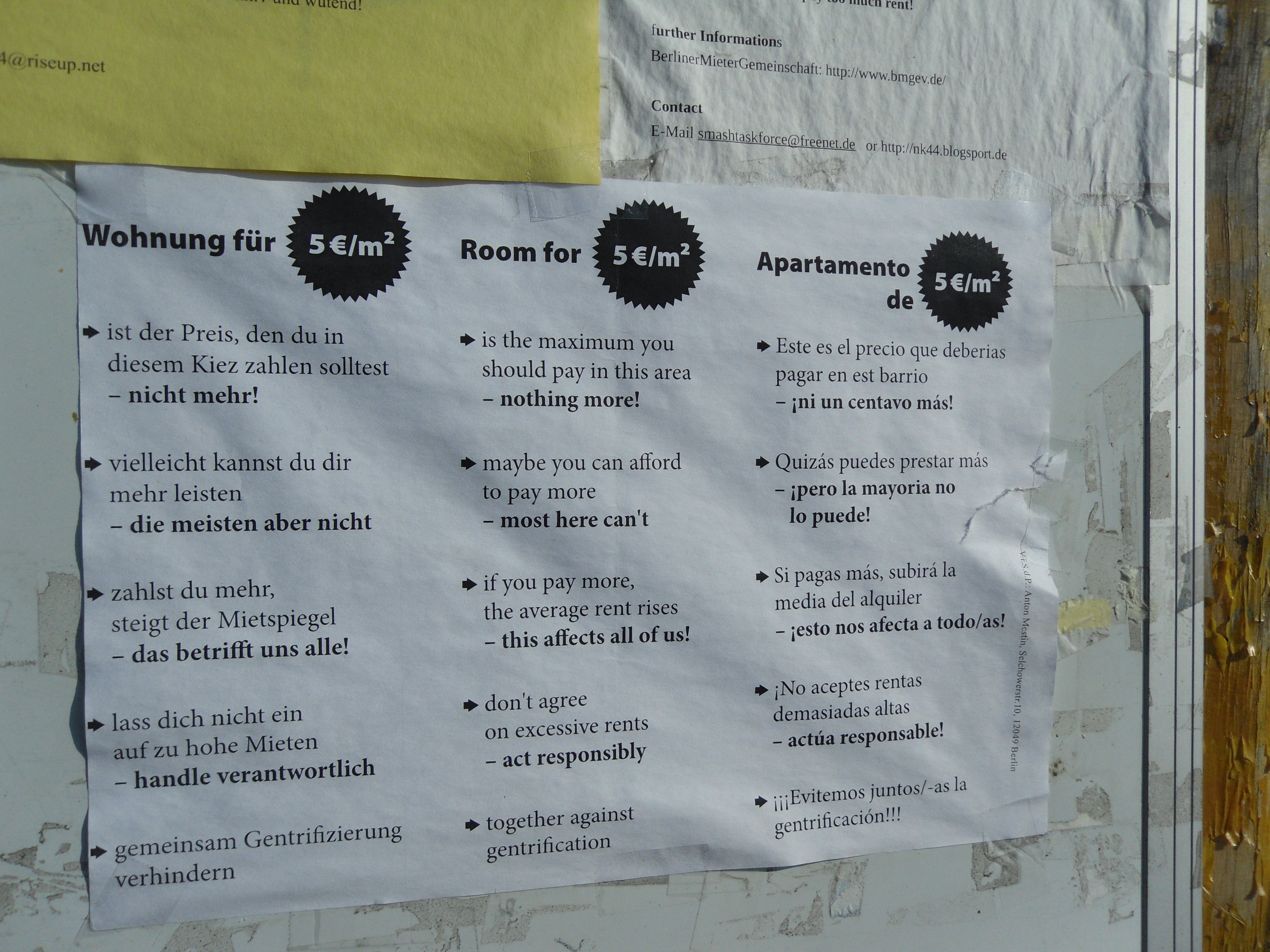
Ok, so, yeah, all the kool kids say Berlin is so cool, blah, blah, blah.
As much as it pains me to say so, I agree.
Many capital are the embodiments of their country, the cultural centre, capturing the essence of the nation in some way. Paris is the obvious example, Madrid may be resented by various peripheral groups like the Catalans, but is the undisputed capital of something known as Spain, likewise London, while not threatened by an armed Yorkshire Liberation Front, isn't universally loved, but is clearly the centre of things in England. Moscow – alternating now and then with St. Petersburg – is the hub of political, social and economic life in Russia.
Or they are unloved, artificial creations like Canberra, representing nothing as much as the remote out-of-touch nature of the state. I don't know first-hand but I guess Brasilia may similarities in that respect to Canberra; even Ottawa, although not created out of thin air has some of that unrepresentative, bureaucratic, out-of-touch feel.
Berlin seems to be something different. Almost not Germany, but most definitely not a town of bureaucrats, order, rules, it is neither the epitome of the nation nor an artificial creation (well, at least not within the last century or so).
It's peculiar history during the cold war created a city divided in two, between capitalist and communist halves, hermetically sealed, with the western, capitalist half surrounded by a sea of inaccessible communism. This showcase of western resistance to Communism was sustained by ideologically motivated subsidy, with a weak real economy, so rents were cheap, lots of places were abandoned, so there was lots of squatting, and residents were exempt from compulsory military training, so pacifists and other ratbags were attracted. All this created a vibrant political and cultural community, surrounded by Stalinist tyranny, but rejecting capitalist hegemony too, squatting, demonstrating, living free and creating communities of resistance.
Perhaps that's over-egging it a bit, but there still is – despite the onslaughts of speculators and investors since the Wall came down, and the influx of Aussie hipsters and others – an intangible feeling of empowerment, of people influencing (if not controlling) the way they want their living space to be. Everywhere there are communally-run bars and restaurants that make a point of having affordable offerings, organisations agitating for rent controls and sticking posters around urging people not to pay more for rent than the average because that makes it unaffordable for locals who don't have the means to pay more, community organisations making gardens, supporting refugees or creating shared work spaces.
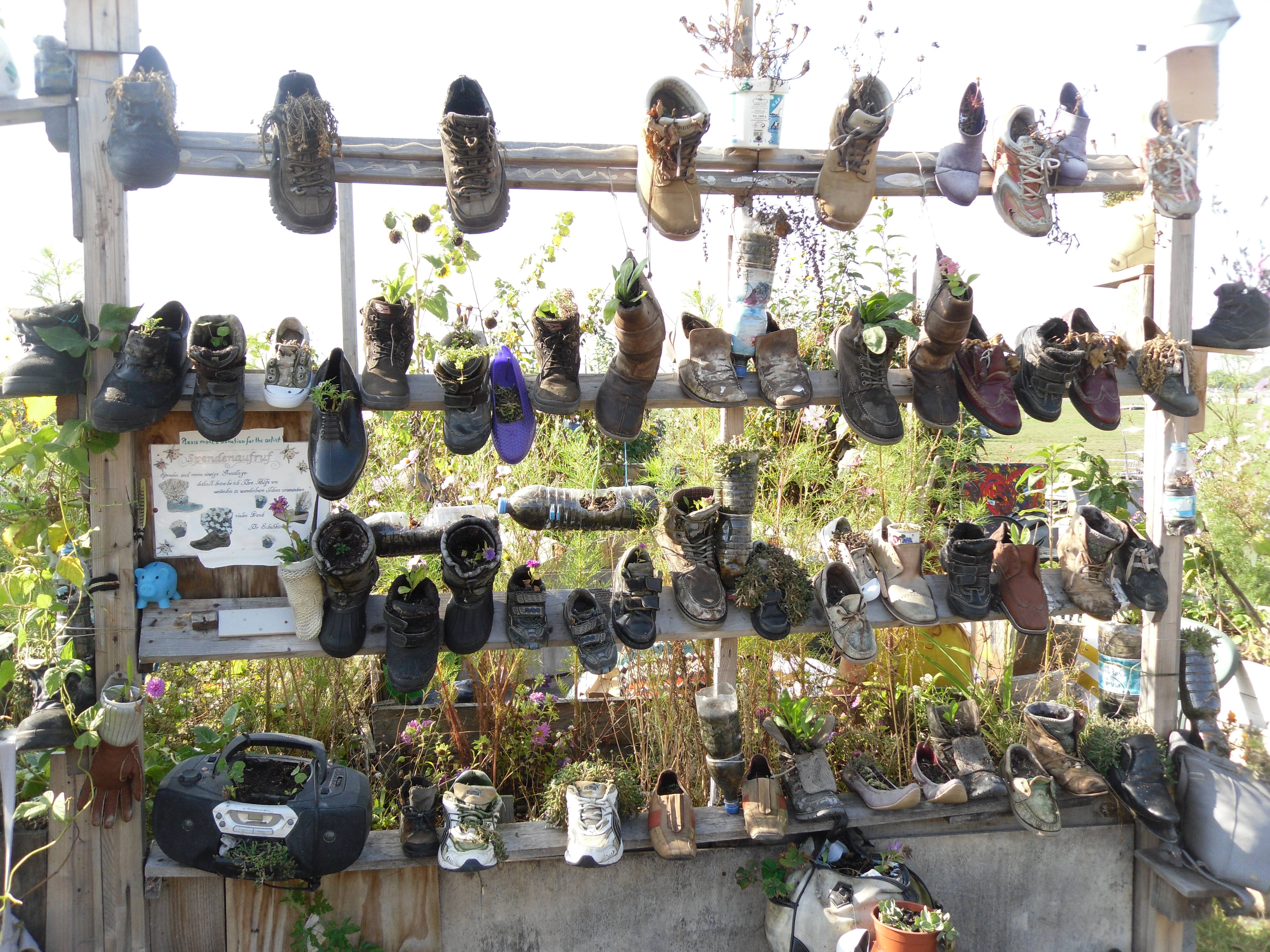
Everywhere are bikes running red lights (something you will rarely see in the rest of Germany), taking the road by default, cars driving patiently and considerately, buses and trains and trams that run all night, spontaneous social meetings on bridges that attract hundreds, demonstrations that close roads (in just a few blocks we saw a pensioners' demo calling for better support for older people, a bike ride demo raising awareness of the effects of global warming on the Arctic and an installation in a square documenting the damage done by the 2010 austerity reforms by displaying case histories of people who committed suicide due to financial desperation), people offering help if you stand looking at a map or are taking a selfie.
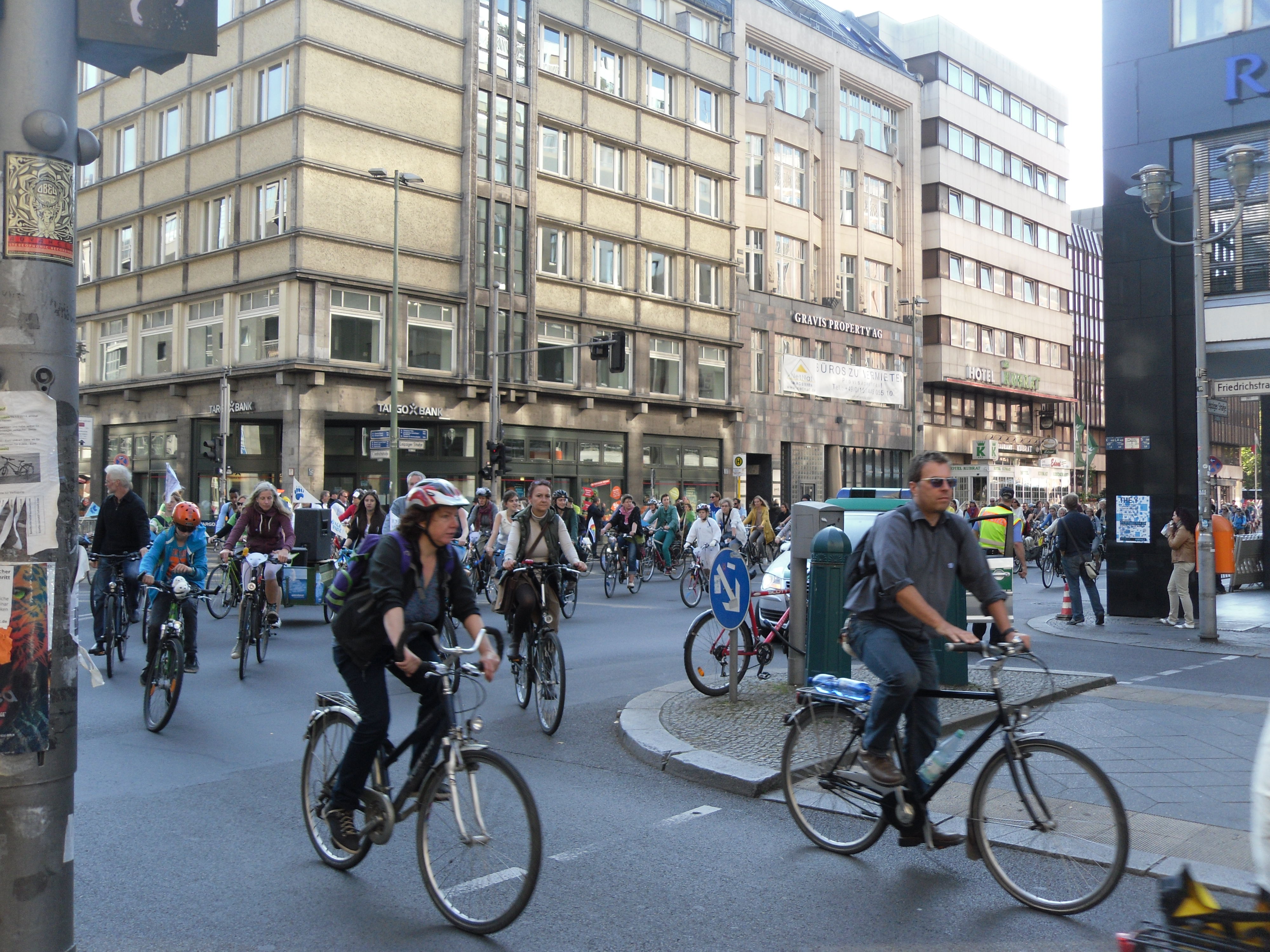
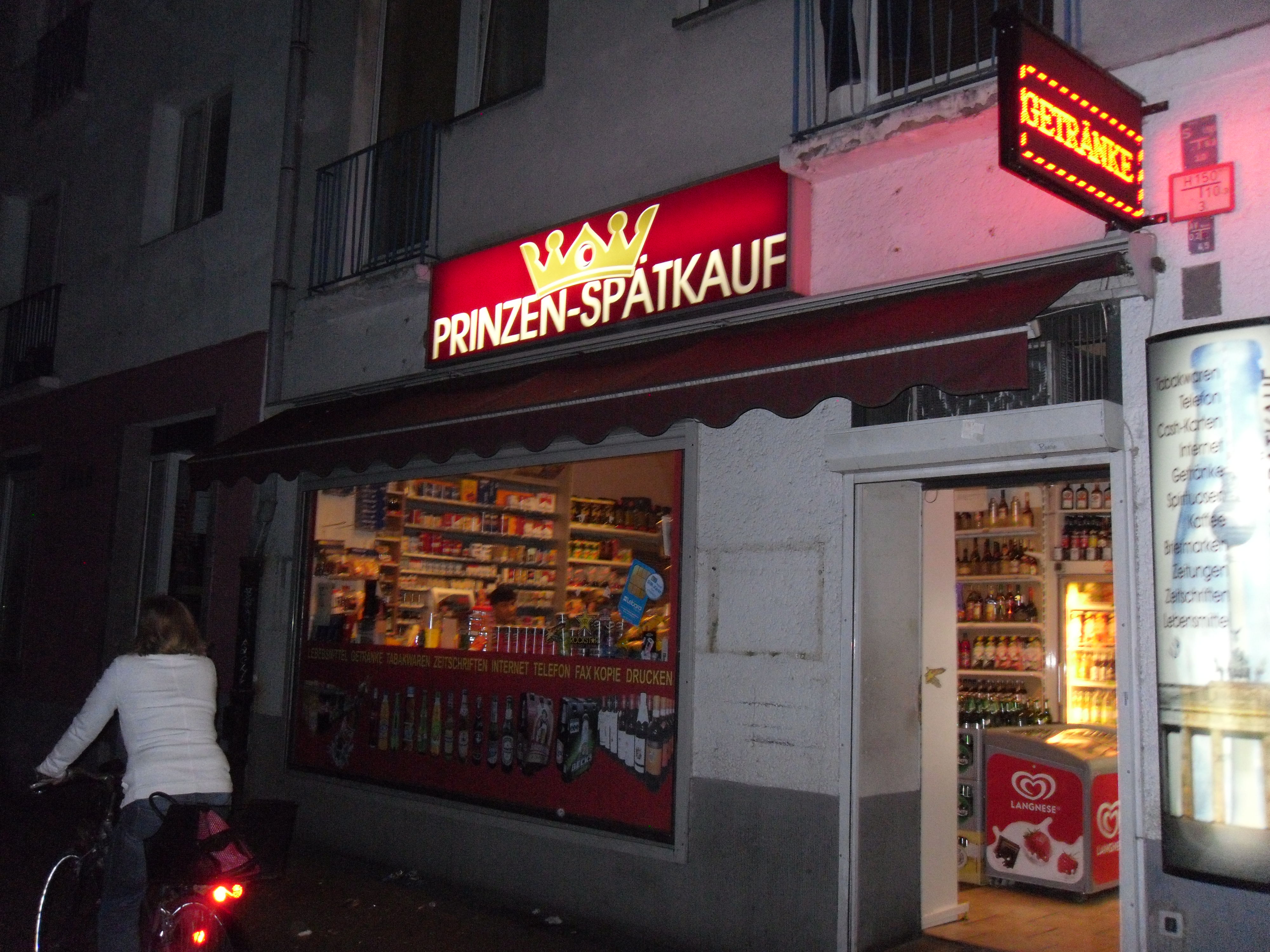
As an example of this difficult to describe feeling is the Templehof airport. This central airport was decommissioned in about 2005 and local citizens' groups fought hard and – for the time being – successfully to save it being taken over by 'developers'. Instead it is open for everyone, a huge open area in a fairly crowded city. The buildings and airfield infrastructure has been left as they are, so you clearly feel that you are in an airport – the runways are used to ride and skate on, there's a marked route around the perimeter for the speed freaks to do a 5km circuit, an area set up for free garden plots, a field used by dozens of kite boards, areas left to grow wild for bird habitat, a mobile bike repair station and a general feeling of public-owned space. For the moment it's safe, but it's future is not guaranteed, only kept from the claws of the speculators by an active and determined citizenry.
Another example would be the place we hired bikes from. It's semi-official, run by a bloke who refurbishes and repairs old bikes and explicitly runs on a philosophy of trust and affordability. So, after giving your name and a contact number, he gives you a bike for 4 euro/day (about AUD$6) with a lock, tells you how to lock it up safely and off you go. If something goes wrong with the bike you call him, he comes to you, repairs or replaces the bike and you get the day free. When you've finished with it you come back, lock the bike up outside and just drop the key and money through a slot in the door. So, he runs a business and makes some money, but less that he could if he chose to, and lives his social ideals of trust and non-exploitation.
So, yes, I enjoyed Berlin!
After the wonder of discovering western Scotland's beauty, we found another place we wished we could spent a lot more time in.
So, if you have a chance, visit Berlin – but contact people through bewelcome.org, couchsurfing or another social accommodation website and, even if, like us, you don't find somewhere to crash, go to one of the many meet-ups and arrange to meet hosts socially. This has consistently resulted in the best city experiences throughout the trip and was definitely true this time – we socialised with a lovely bloke we met through bewelcome, who showed us lots of local places and backgrounded us on the city, as well as going to a couchsurfing meet-up where we had a grand old time. We met lots of people, Germans and long-term foreigners, especially North Americans, who are present in great numbers and Spanish speakers from Europe and Latin America.
[Warning: bigoted rant follows]
Amongst these, especially the English speakers, are a fair few of the dreaded hipster variety, all style and no political substance – or seemingly any ability to speak the local language! I couldn't get over how much English was spoken around the place, even by people who'd been living there for years – there's even an Aussie hipster cafe (Melbourne canteen) that didn't until recently even have menus in German! Perplexing, especially amongst people who are bound to come home and inflict all sorts of Euro-smugness on the rest of us. And it's the most expensive cafe in an area known for cheap prices and social awareness, so while appropriating the style of bohemia it's actively undermining it … grrr! I could – but lucky for you, dear reader, won't – go on at tedious length about this! [Bigot-free zone resumes]
As well as the social and political situation, Berlin has a well-deserved reputation as a place where you can have a good time, with lots of music, parties, bars, eateries open late (which in Berlin means til dawn). And it also has an amazing collection of museums, none of which, with all the night-life and social awareness going on, we managed to visit. On my last trip here I saw half the Jewish museum and had hoped to see it properly this time, but, as with so many other enticing Berlin things, it'll have to wait. But, on a walking tour we did see the Memorial to the murdered Jews of Europe, a haunting, disorientating simple memorial – a large square covered in tall rectangular blocks, all slightly off-centre, all different heights, which you walk amongst. It's similar to the Garden of Exile in the Jewish museum and very powerful in a hard to describe way.
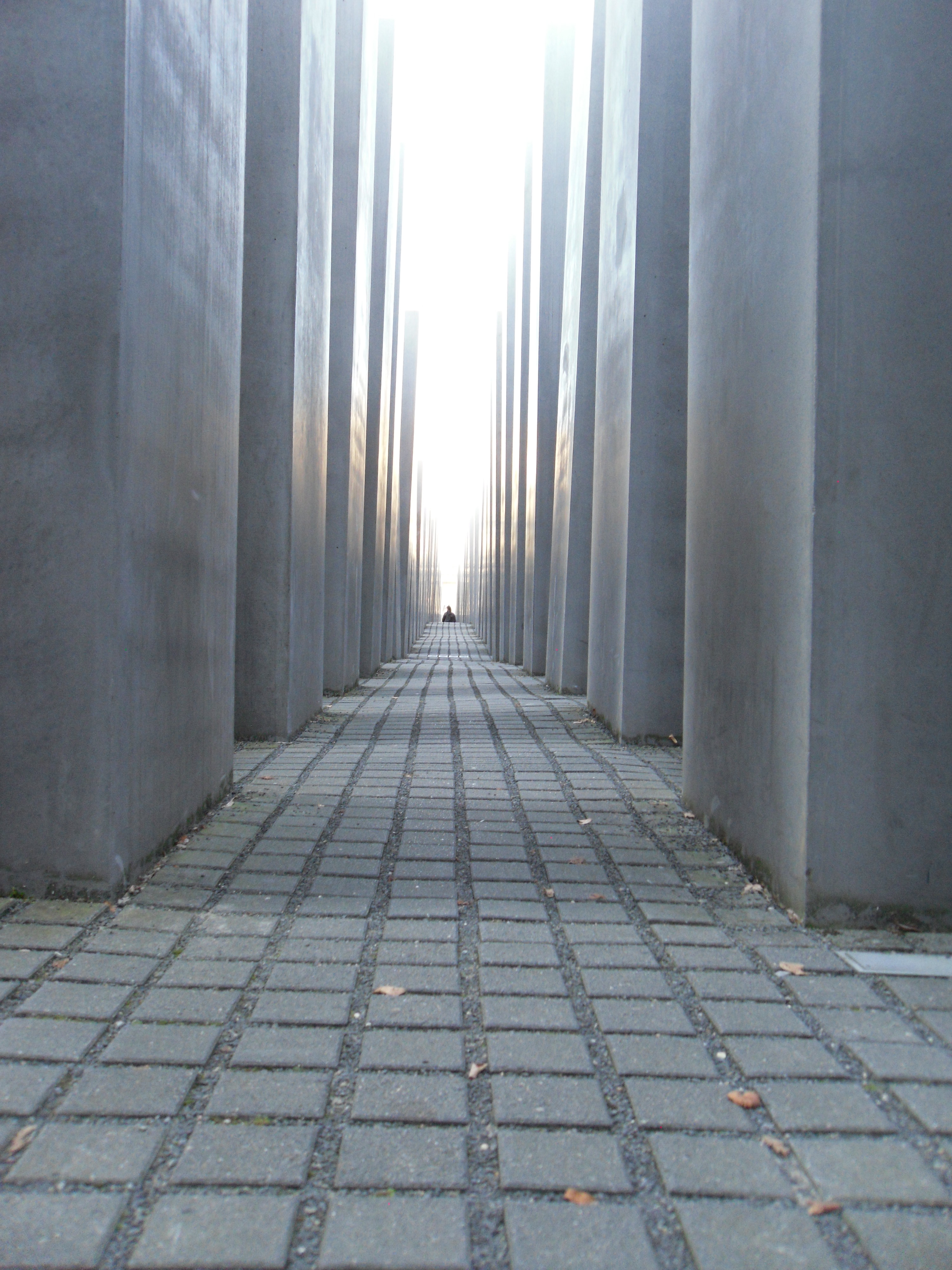
We also saw the former residential blocks of the elite of the Communist regime, which happen to be on top of Hitler's former bunker complex, where he and a few of his closest lunatics killed themselves just before the Soviets got there. And of course there's the Wall and there's …. so much to Berlin, including the aforementioned walking tour, which was exceptionally good.
And now we're heading off on another wonderfully comfortable German ICE train to, if not the complete opposite, then a culturally very different zone, to go walking in the Fränkische Schweiz (Franconian Switzerland), a hilly, relatively lightly-populated, fairly traditional area of Franconia (not Switzerland!) in southeastern Germany, which as well as having lots of natural beauty has the highest proportion of breweries to population in the world!